What You Need To Know About Antioxidants For Respiratory Health – Quercetin and 8 Powerful Antioxidant for Chronic obstructive pulmonary disease (COPD)
Quercetin: A Powerful Antioxidant for Chronic obstructive pulmonary disease (COPD)
Happy New Year! Welcome 2024!
Overview
Are antioxidants effective for respiratory diseases? Chronic obstructive pulmonary disease (COPD) is a serious and progressive respiratory condition that affects millions of people worldwide. It is characterized by constant respiratory symptoms, progressive airflow obstruction, and limitation. The primary risk factor for COPD is tobacco smoking, which exposes individuals to a wide range of toxic chemicals, including reactive oxygen species (ROS).
Cigarette smoke-induced oxidative stress plays a major role in the pathogenesis and progression of COPD. It leads to an imbalance between the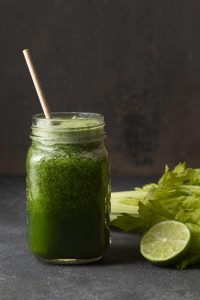
One promising compound that has gained attention for its potential protective effects on the lungs is quercetin. Quercetin is a natural flavonoid that is abundantly found in various fruits, vegetables, and other plant-based foods. It is known for its potent antioxidant and anti-inflammatory properties, which make it an attractive candidate for respiratory health support. In recent years, several studies have investigated the effects of quercetin on lung function, oxidative stress, and inflammation in animal models of COPD, with promising results. This article explores the potential benefits of quercetin for respiratory health and provides an overview of the current scientific evidence.
The Mechanism of Quercetin in COPD
Quercetin exerts its protective effects on the lungs primarily through its antioxidant and anti-inflammatory mechanisms. As a potent antioxidant, quercetin can neutralize ROS and prevent oxidative damage to cellular components, such as proteins, lipids, and DNA. It achieves this by reacting with reactive species and forming less reactive phenoxy radicals. Additionally, quercetin enhances the activity of antioxidant enzymes, such as superoxide dismutase (SOD) and catalase, by activating the nuclear factor erythroid 2-related factor 2 (Nrf2) pathway. This pathway plays a crucial role in the body’s defense against oxidative stress by upregulating the expression of antioxidant genes and reducing inflammation.
In addition to its antioxidant properties, quercetin also exhibits anti-inflammatory effects by modulating the activity of various pro-inflammatory mediators, including cytokines and chemokines. Studies have shown that quercetin can inhibit the production and secretion of inflammatory cytokines, such as interleukin-10 (IL-10), interleukin-13 (IL-13), interleukin-17 (IL-17), and interleukin-22 (IL-22), which play key roles in the pathogenesis of COPD. By suppressing the release of these cytokines, quercetin helps to reduce the inflammatory response in the lungs and prevent tissue damage.
What Are Antioxidants and Their Mechanism of Action
Antioxidants are molecules that protect cells from damage caused by free radicals. Free radicals are highly reactive molecules produced in the body as a result of normal metabolic processes and exposure to various environmental factors such as pollution, radiation, and tobacco smoke. These free radicals can damage cells and contribute to the aging process and the development of various diseases, including cancer and cardiovascular diseases.
Mechanism of Action
The mechanism of action of antioxidants involves neutralizing free radicals, preventing them from causing damage to cells. Free radicals are unstable molecules with unpaired electrons, and they can steal electrons from other molecules in an attempt to become stable. This process, known as oxidative stress, can lead to cell damage and inflammation.
Antioxidants work by donating electrons to free radicals, thereby neutralizing them and preventing further damage. They can also break the chain reaction of free radical formation by stabilizing and rendering free radicals less harmful. Antioxidants play a crucial role in maintaining the balance between free radicals and antioxidants in the body, known as the oxidative balance.
Common antioxidants include vitamins C and E, beta-carotene, selenium, and various phytochemicals found in fruits, vegetables, and other plant-based foods. These antioxidants can be obtained through a balanced diet or supplements.
Beneficial Antioxidants for COPD
Chronic Obstructive Pulmonary Disease (COPD) is a progressive lung disease that can benefit from the inclusion of natural antioxidants in one’s diet. Antioxidants help combat oxidative stress, which is a key factor in the development and progression of COPD. Here are some natural antioxidants that have shown potential benefits for individuals with COPD:
- Vitamin C (Ascorbic Acid):
- Found in citrus fruits, strawberries, bell peppers, and broccoli, vitamin C is a potent antioxidant that may help reduce inflammation in the airways and improve lung function in individuals with COPD.
- Vitamin E (Tocopherols and Tocotrienols):
- Nuts, seeds, spinach, and broccoli are good sources of vitamin E which is a powerful antioxidant. This antioxidant may help protect lung cells from damage caused by oxidative stress.
- Beta-carotene:
- This antioxidant is found in carrots, sweet potatoes, spinach, and kale, beta-carotene is a precursor to vitamin A. It has antioxidant properties and may play a role in reducing the risk of COPD exacerbations.
- Flavonoids (Quercetin, Kaempferol, and Rutin):
- Present in fruits, vegetables, tea, and red wine, flavonoids exhibit anti-inflammatory and antioxidant properties. Quercetin, in particular, has been studied for its potential in reducing inflammation and improving lung function.
- Selenium:
- Found in Brazil nuts, fish, and whole grains, selenium is an essential trace element with antioxidant properties. Adequate selenium levels may support overall lung health and reduce inflammation.
Omega-3 Fatty Acids:
- Found in fatty fish (such as salmon and mackerel), flaxseeds, and walnuts, omega-3 fatty acids have anti-inflammatory effects that may benefit individuals with COPD by reducing inflammation in the lungs.
- Coenzyme Q10 (CoQ10):
- Present in meat, fish, and whole grains, CoQ10 is an antioxidant that plays a role in cellular energy production. Some studies suggest that CoQ10 supplementation may have a positive impact on exercise performance and overall well-being in individuals with COPD.
- Curcumin (Turmeric):
- Curcumin, the active compound in turmeric, has anti-inflammatory and antioxidant properties. It may help reduce inflammation in the airways and alleviate symptoms associated with COPD.
- Astaxanthin:
- Found in salmon, shrimp, and microalgae, astaxanthin is a powerful antioxidant with anti-inflammatory properties. It may contribute to respiratory health by reducing oxidative stress.
It’s important to note that while these antioxidants may offer benefits for individuals with COPD, dietary changes and supplementation should be discussed with a healthcare professional. Each person’s condition is unique, and personalized recommendations can ensure the most appropriate approach to managing COPD symptoms and improving overall lung health.
Benefits of Quercetin
In the pursuit of optimal health, we often overlook the natural wonders that exist in the realm of nutrition. One such gem is quercetin, a flavonoid found in various fruits, vegetables, and grains. Beyond its antioxidant properties, quercetin has gained attention for its potential to support respiratory health. Let’s dive into the world of quercetin and explore seven compelling reasons to incorporate it into your lifestyle.
- Antioxidant Powerhouse: Quercetin, abundant in foods like apples, onions, and kale, boasts powerful antioxidant properties. These compounds help neutralize harmful free radicals, reducing oxidative stress in the body. By doing so, quercetin may play a vital role in supporting overall health, including respiratory function.
- Anti-Inflammatory Ally: Chronic inflammation is often linked to respiratory issues, including asthma and allergies. Quercetin has been recognized for its anti-inflammatory effects, potentially aiding in the reduction of inflammation in the respiratory system. This makes it a valuable addition for those looking to support lung health naturally.
- Immune System Support: A robust immune system is essential for maintaining respiratory health. Quercetin has been shown to modulate immune responses, supporting the body’s defense mechanisms. By incorporating quercetin-rich foods or supplements, individuals may fortify their immune system, providing an extra layer of protection against respiratory challenges.
- Histamine Regulation: For those prone to allergies, histamine release can lead to respiratory discomfort. Quercetin has been studied for its ability to stabilize mast cells, which are responsible for releasing histamine. By helping to regulate histamine levels, quercetin may contribute to a more balanced immune response and reduced allergy symptoms.
- Bronchodilator Effect: Research suggests that quercetin may have a bronchodilator effect, meaning it could help relax the muscles of the respiratory tract, making it easier to breathe. While more studies are needed to fully understand this aspect, the preliminary findings highlight quercetin’s potential as a natural support for respiratory function.
- Viral Defense: In the context of viral infections, quercetin has shown promise in inhibiting the replication of certain viruses. While not a cure, incorporating quercetin into your routine may contribute to a more robust defense against respiratory viruses, providing an additional layer of protection.
- Exercise Performance and Recovery: For those engaged in regular physical activity, respiratory health is paramount. Quercetin has been studied for its potential to enhance exercise performance and aid in post-exercise recovery. By supporting lung function and mitigating exercise-induced oxidative stress, quercetin may be a valuable ally for fitness enthusiasts.
In the pursuit of respiratory well-being, quercetin emerges as a natural and promising ally. Whether through dietary sources or supplements, incorporating quercetin-rich foods into your routine may offer a breath of fresh air for your respiratory health. As with any supplement, it’s crucial to consult with healthcare professionals and consider individual health conditions before making significant changes to your diet.
Quercetin and Lung Function
One of the hallmarks of COPD is the progressive decline in lung function, characterized by reduced airflow and impaired gas exchange. Studies have shown that quercetin supplementation can improve lung function in animal models of COPD. For example, in a study conducted by Araújo et al., mice exposed to cigarette smoke and treated with quercetin showed a reduction in respiratory rate, indicating improved lung function. Similarly, other studies have reported that quercetin treatment can enhance tidal volume and minute ventilation, further supporting its beneficial effects on lung function. These findings suggest that quercetin has the potential to mitigate the airflow limitation observed in COPD and improve overall respiratory function.
Quercetin and Inflammation
Chronic inflammation is a key feature of COPD and contributes to the progressive decline in lung function. The inflammatory response in COPD is characterized by the recruitment of immune cells, such as macrophages and neutrophils, to the airways and lung tissues. Cigarette smoke-induced inflammation is mediated by the release of pro-inflammatory cytokines and chemokines, which perpetuate the inflammatory cascade and lead to tissue damage.
Quercetin has been shown to attenuate inflammation in COPD by suppressing the production of these inflammatory mediators. Studies have demonstrated that quercetin treatment can reduce the levels of IL-10, IL-13, IL-17, and IL-22 in the lungs, thereby modulating the inflammatory response and preventing tissue damage. These anti-inflammatory effects of quercetin make it a potential therapeutic agent for the management of COPD.
Quercetin and Oxidative Stress
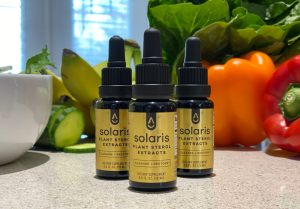
It enhances the activity of antioxidant enzymes, such as SOD and catalase, which play a vital role in neutralizing ROS and preventing cellular damage. Additionally, quercetin can modulate the expression and activity of metalloproteinases (MMPs), which are involved in the degradation of the extracellular matrix and the development of emphysema. By preventing redox imbalance and inhibiting MMPs, quercetin can help preserve lung tissue integrity and prevent the progression of COPD.
Quercetin and Lung Morphology
Long-term exposure to cigarette smoke leads to structural changes in the lungs, including the destruction of alveolar walls and the enlargement of airspaces, known as emphysema. Quercetin has been shown to protect against these morphological changes and preserve lung architecture. Studies have demonstrated that quercetin treatment can reduce the volume density of alveolar airspaces (Vv [a]) and increase the volume density of alveolar septa (Vv [sa]), indicating a protective effect on lung tissue integrity. Additionally, quercetin administration has been shown to decrease the mean linear intercept (Lm), an indicator of airspace enlargement, and improve the histological pattern of pulmonary parenchyma. These findings suggest that quercetin can attenuate the development of emphysema and preserve lung function in COPD.
Quercetin: A Safe and Well-Tolerated Supplement
In addition to its potential therapeutic benefits, quercetin has been shown to be safe and well-tolerated in human studies. A clinical trial conducted with COPD subjects demonstrated that quercetin consumption was safe and did not cause any adverse effects. This is an important consideration, as the long-term use of any therapeutic agent requires careful evaluation of its safety profile. The safety and tolerability of quercetin make it a promising candidate for further research and potential clinical application in the management of COPD.
Conclusion
In conclusion, quercetin holds significant promise as a potential therapeutic agent for the prevention and management of COPD. Its antioxidant and anti-inflammatory properties make it a valuable compound for mitigating oxidative stress, reducing inflammation, and preserving lung function. Moreover, quercetin has been shown to protect against morphological changes in the lungs, such as the destruction of alveolar walls and airspace enlargement. Importantly, quercetin is safe and well-tolerated, further supporting its potential as a supplement for respiratory health support. Further research is warranted to explore the full therapeutic potential of quercetin and its mechanisms of action in COPD.
For natural and healing remedies, products, and supplements to help you live your most optimal healthy life, visit our store here!
Remember: Own Your Health!
If you enjoyed the information presented in this article, Please Share It. Help us reach more people and keep this website going! Thank you!
Note: The information provided in this article is for educational purposes only and should not be considered medical advice. Please consult with a healthcare professional or registered dietitian before making any significant changes to your diet or lifestyle.
References
- Boots AW, Haenen GR, Bast A. Health effects of quercetin: from antioxidant to nutraceutical. Eur J Pharmacol. 2008;585(2-3):325-337.
- Rogerio AP, Kanashiro A, Fontanari C, et al. Anti-inflammatory activity of quercetin and isoquercitrin in experimental murine allergic asthma. Inflamm Res. 2007;56(10):402-408.
- Kim HP, Son KH, Chang HW, Kang SS. Anti-inflammatory plant flavonoids and cellular action mechanisms. J Pharmacol Sci. 2004;96(3):229-245.
- Li Y, Yao J, Han C, et al. Quercetin, inflammation and immunity. Nutrients. 2016;8(3):167.
- Thaiss CA, Levy M, Itav S, et al. Hyperglycemia drives intestinal barrier dysfunction and risk for enteric infection. Science. 2018;359(6382):1376-1383.
- Tanaka T, Narazaki M, Kishimoto T. IL-6 in inflammation, immunity, and disease. Cold Spring Harb Perspect Biol. 2014;6(10):a016295.
- Davis JM, Murphy EA, Carmichael MD, Davis B. Quercetin increases brain and muscle mitochondrial biogenesis and exercise tolerance. Am J Physiol Regul Integr Comp Physiol. 2009;296(4):R1071-R1077.
- Li H, Liu X, Pi Y, et al. Quercetin and its metabolites improve vessel function by inducing eNOS activity via phosphorylation of AMPK. Biochem Pharmacol. 2016;118:69-80.
- Ganesan S, Faris AN, Comstock AT, et al. Quercetin prevents progression of disease in elastase/LPS-exposed mice by negatively regulating MMP expression. Respir Res. 2010;11:131.
- Egert S, Bosy-Westphal A, Seiberl J, et al. Quercetin reduces systolic blood pressure and plasma oxidised low-density lipoprotein concentrations in overweight subjects with a high-cardiovascular disease risk phenotype: a double-blinded, placebo-controlled cross-over study. Br J Nutr. 2009;102(7):1065-1074.
- https://www.ncbi.nlm.nih.gov/pmc/articles/PMC8868486/
- Hemilä H. (2017). Vitamin C and Infections. Nutrients, 9(4), 339. [doi:10.3390/nu9040339]
- Agler AH, Kurth T, Gaziano JM, Buring JE, Cassano PA. (2011). Randomised vitamin E supplementation and risk of chronic lung disease in the Women’s Health Study. Thorax, 66(4), 320-325. [doi:10.1136/thx.2010.156331]
- Omenn GS, Goodman GE, Thornquist MD, et al. (1996). Effects of a combination of beta-carotene and vitamin A on lung cancer and cardiovascular disease. New England Journal of Medicine, 334(18), 1150–1155.
- Hirano T, Higa S, Arimitsu J, et al. (2006). Flavonoids such as luteolin, fisetin and apigenin are inhibitors of interleukin-4 and interleukin-13 production by activated human basophils. International Archives of Allergy and Immunology, 140(2), 150-160. [doi:10.1159/000092002]
- Akbaraly NT, Arnaud J, Hininger-Favier I, et al. (2005). Selenium and Mortality in the Elderly: Results from the EVA Study. Clinical Chemistry, 51(11), 2117–2123. [doi:10.1373/clinchem.2005.055301]
- Broekhuizen R, Wouters EF, Creutzberg EC, Schols AM. (2005). Polyunsaturated fatty acids improve exercise capacity in chronic obstructive pulmonary disease. Thorax, 60(5), 376-382. [doi:10.1136/thx.2004.030288]
- Dai YL, Luk TH, Yiu KH, et al. (2010). Reversal of mitochondrial dysfunction by coenzyme Q10 supplement improves endothelial function in patients with ischaemic left ventricular systolic dysfunction: a randomized controlled trial. Atherosclerosis, 213(1), 213-219. [doi:10.1016/j.atherosclerosis.2010.08.014]
- Aggarwal BB, Harikumar KB. (2009). Potential therapeutic effects of curcumin, the anti-inflammatory agent, against neurodegenerative, cardiovascular, pulmonary, metabolic, autoimmune, and neoplastic diseases. The International Journal of Biochemistry & Cell Biology, 41(1), 40-59. [doi:10.1016/j.biocel.2008.06.010]
- Iio K, Ito S, Kono M, et al. (2018). Effects of astaxanthin in obese mice fed a high-fat diet. Bioscience, Biotechnology, and Biochemistry, 82(1), 133-141. [doi:10.1080/09168451.2017.1392700]
- Halliwell B, Gutteridge JM. Free Radicals in Biology and Medicine. Oxford University Press; 2015.
- Sies H, Jones DP. Reactive oxygen species (ROS) as pleiotropic physiological signalling agents. Nat Rev Mol Cell Biol. 2020;21(7):363-383. doi:10.1038/s41580-020-0230-3.
- Brigelius-Flohe R, Joost HG. Glutathione peroxidases. In: Flohe L, Harris JR, eds. Selenium in Biology and Human Health. Springer; 1994:95-116. doi:10.1007/978-1-4615-2419-6_9.

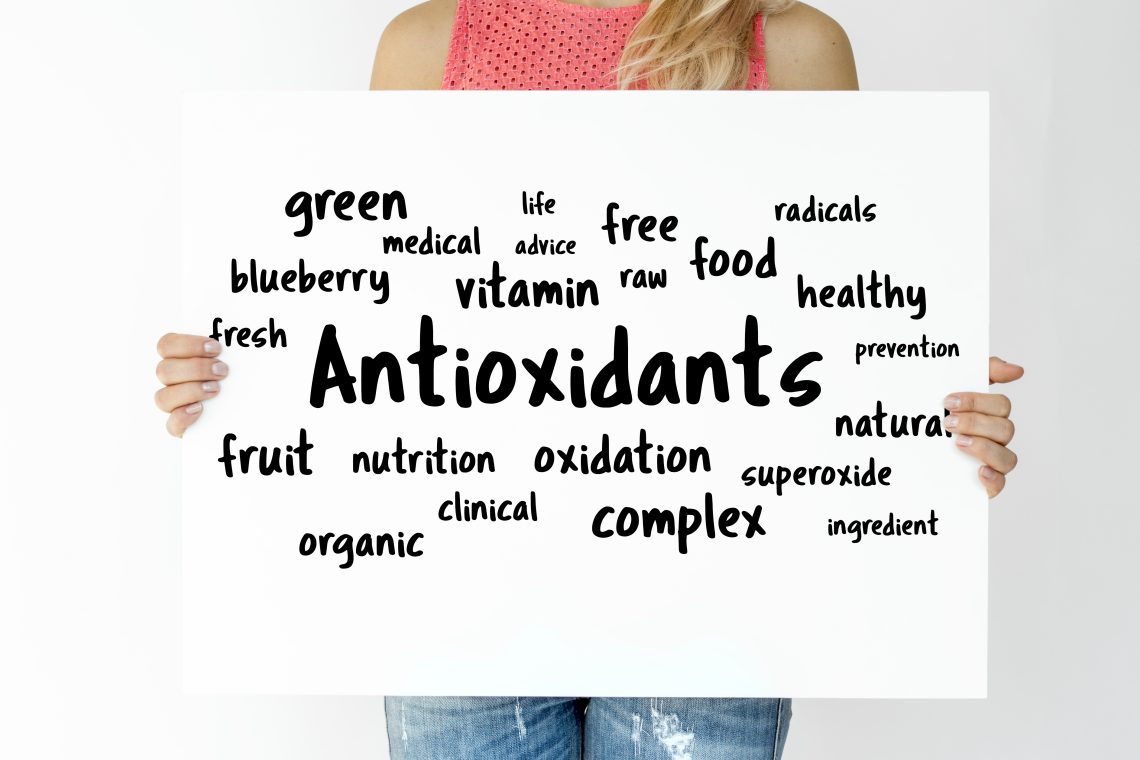

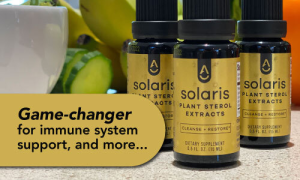





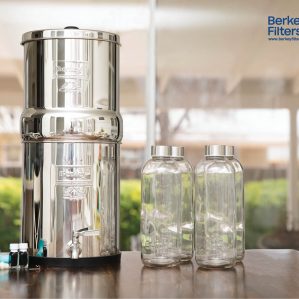
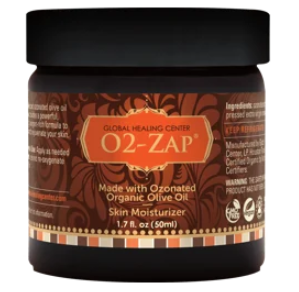

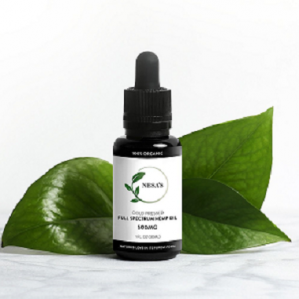
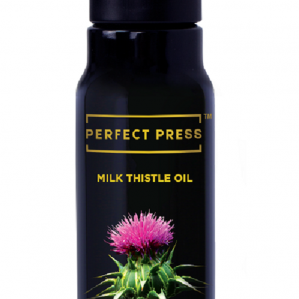











1 Comment
[…] Effects: Carvacrol has potent antioxidant properties, helping to neutralize free radicals and reduce oxidative stress, which is beneficial in preventing […]